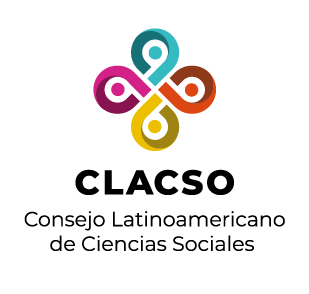Red de Bibliotecas Virtuales de Ciencias Sociales en
América Latina y el Caribe

Por favor, use este identificador para citar o enlazar este ítem:
https://biblioteca-repositorio.clacso.edu.ar/handle/CLACSO/73990Registro completo de metadatos
| Campo DC | Valor | Lengua/Idioma |
|---|---|---|
| dc.contributor | Coodenação de Aperfeiçoamento de Pessoal de Nível Superior | pt-BR |
| dc.contributor | Coordenação de Aperfeiçoamento de Pessoal de Nível Superior | en-US |
| dc.creator | Lucena, Mycarla Araujo | - |
| dc.creator | Freire, Eliza Maria | - |
| dc.date | 2015-09-22 | - |
| dc.date.accessioned | 2022-03-21T18:21:42Z | - |
| dc.date.available | 2022-03-21T18:21:42Z | - |
| dc.identifier | https://revistas.ufpr.br/raega/article/view/37102 | - |
| dc.identifier | 10.5380/raega.v34i0.37102 | - |
| dc.identifier.uri | http://biblioteca-repositorio.clacso.edu.ar/handle/CLACSO/73990 | - |
| dc.description | Priority Areas for Conservation are defined in order to protect environments that are home to a richness of species, endemisms and/or endangered species. However, besides these factors, additional studies such as Environmental Perception of local communities and Landscape Analysis are relevant to assess and minimize the negative effects caused to natural environments. In this context and in this perspective, the Mountain Range Complex João do Vale was studied, located in the state of Rio Grande do Norte, which holds a set of landscapes with different vegetation types that are being replaced by various economic activities resulting from disordered population growth and consequent exploitation of natural resources' potential. The use of these resources, in most cases, occurs improperly, leading to a depletion of this potential. This study proposes to combine Analysis of Landscape, through a Geographic Information System (GIS), to the Environmental Perception of rural communities in order to define Priority Areas for Conservation. Perception data were obtained through direct observation, questioning, interviews and application forms (n = 240); as to the landscape, data from slope maps, Permanent Preservation Areas (PPA) and Environmental Vulnerability were used. The Content Analysis used for perception data showed that respondents have a sense of topophilia regarding where they live, hold a vast knowledge about natural resources and responded positively when asked about the choice of an exclusive area for conservation. These results coupledwith the Analysis of Landscape allowed with of Priorty Areas for Conservation in this Mountain Range Complex with three categories of priority low, medium and high. | pt-BR |
| dc.description | Priority Areas for Conservation are defined in order to protect environments that are home to a richness of species, endemisms and/or endangered species. However, besides these factors, additional studies such as Environmental Perception of local communities and Landscape Analysis are relevant to assess and minimize the negative effects caused to natural environments. In this context and in this perspective, the Mountain Range Complex João do Vale was studied, located in the state of Rio Grande do Norte, which holds a set of landscapes with different vegetation types that are being replaced by various economic activities resulting from disordered population growth and consequent exploitation of natural resources' potential. The use of these resources, in most cases, occurs improperly, leading to a depletion of this potential. This study proposes to combine Analysis of Landscape, through a Geographic Information System (GIS), to the Environmental Perception of rural communities in order to define Priority Areas for Conservation. Perception data were obtained through direct observation, questioning, interviews and application forms (n = 240); as to the landscape, data from slope maps, Permanent Preservation Areas (PPA) and Environmental Vulnerability were used. The Content Analysis used for perception data showed that respondents have a sense of topophilia regarding where they live, hold a vast knowledge about natural resources and responded positively when asked about the choice of an exclusive area for conservation. These results coupledwith the Analysis of Landscape allowed with of Priorty Areas for Conservation in this Mountain Range Complex with three categories of priority low, medium and high. | en-US |
| dc.format | application/pdf | - |
| dc.format | application/pdf | - |
| dc.language | eng | - |
| dc.language | por | - |
| dc.publisher | UFPR | pt-BR |
| dc.relation | https://revistas.ufpr.br/raega/article/view/37102/26215 | - |
| dc.relation | https://revistas.ufpr.br/raega/article/view/37102/26236 | - |
| dc.source | RA'E GA Journal - The Geographic Space in Analysis; v. 34 (2015); 69-97 | en-US |
| dc.source | Raega - O Espaço Geográfico em Análise; v. 34 (2015); 69-97 | pt-BR |
| dc.source | 2177-2738 | - |
| dc.source | 1516-4136 | - |
| dc.source | 10.5380/raega.v34i0 | - |
| dc.subject | en-US | |
| dc.subject | Semiarid; Rural communities; Conservation; Environmental Perception; Mountainous environments | en-US |
| dc.subject | Semiarid; Rural communities; Conservation; Environmental Perception; Mountainous environments. | pt-BR |
| dc.title | ENVIRONMENTAL PERCEPTION OF RURAL COMMUNITIES AND ANALYSIS OF LANDSCAPE: SUBSIDIES FOR PRIORITY AREA FOR CONSERVATION PROPOSITION IN THE RIO GRANDE DO NORTE SEMIARID, BRAZIL | pt-BR |
| dc.title | ENVIRONMENTAL PERCEPTION OF RURAL COMMUNITIES AND ANALYSIS OF LANDSCAPE: SUBSIDIES FOR PRIORITY AREA FOR CONSERVATION PROPOSITION IN THE RIO GRANDE DO NORTE SEMIARID, BRAZIL | en-US |
| dc.type | info:eu-repo/semantics/article | - |
| dc.type | info:eu-repo/semantics/publishedVersion | - |
| dc.type | pt-BR | |
| Aparece en las colecciones: | Programa de Pós-graduação em Geografía - PPGGeo/UFPR - Cosecha | |
Ficheros en este ítem:
No hay ficheros asociados a este ítem.
Los ítems de DSpace están protegidos por copyright, con todos los derechos reservados, a menos que se indique lo contrario.